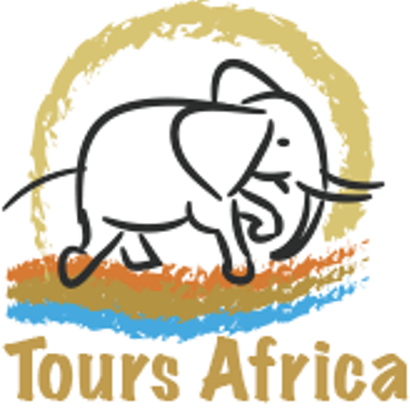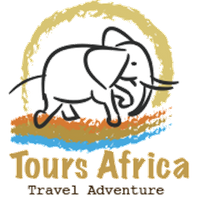
South Africa's Famous Big Five Animals
The Big Five
The “Big Five” is certainly one of the major reasons why hundreds of tourists flock to South Africa. Everyone wants to see animals in the wild without any air of the captivity. Wildlife is a definite pull for South Africa’s tourism industry as there is much conservation of our indigenous creatures. Safari drives in our national parks are very popular along with visits to private reserves. But you may be thinking, why the name? And also, which animals belong to this prestigious category.
Why ‘Big Five’ and Who They are
For South Africans, the animals belonging to the Big Five are relatively easy for us to remember given that they are on our different denominations of our bills (more on that below!). When you come to South Africa, you can also take note of this in case you forget. The name, “Big Five”, has a bit of an ugly past as it stems from the five most difficult animals to hunt on foot. Despite this beginning, safari guides adopted the name and it is now the colloquial term for these animals. The animals themselves are a big draw to mammal-loving tourists as they include icons like the African Elephant, Rhinoceros, and Lion as well as the African Buffalo and Leopard.
Conservation Status and Where to See the Big Five
Now the Big Five is more synonymous with conservation status rather than hunting. The only animal on the list of least concern is the African (or Cape) Buffalo. African elephants are labelled vulnerable while Rhinoceroses are critically endangered. Both are hunted by poachers for their tusks and horns respectively. Habitat loss is also a huge problem for the Big Five animals and conversation efforts are in place in South Africa to curb the effect of the human population growth on these beautiful creatures. As for the Lion and Leopard, things are not too good for these big cats. Lion populations are vulnerable and decreasing. Leopards are near threatened as well. Because of their at risk statuses, people come from all around the world to catch a glimpse of these animals in their natural habitat. In South Africa, there are quite a few places to see the Big Five but the major visits are often made to: Kruger National Park (Limpopo/Mpumalanga), Hluhluwe-Imfolozi Game Reserve (Northern KwaZulu-Natal), and Addo Elephant Park (Eastern Cape).
The Animals
Lion:
This is the animal on our 50 rand note. Besides the Elephant, it is certainly the most well-known African creature, especially the male lion with its luxurious mane. The darker the mane, the older a lion is. Hunted for their coats in the past, lions still face the horror of poaching. Currently, there are around 14 000 lions in the wild and their population is on the decrease. They are very social animals and live in a group called a pride. Lions excite both children and adults alike and it is a real marvel to see one in the flesh, let alone a whole pride. Lions love to sleep so you can catch them dozing off under trees or in the long grass. They are very well camouflaged with their tawny coats which blend well into the savanna.
South Africa with its national parks and reserves is certainly the place to do this. Getting fetched at the crack of dawn to be driven around the game reserve in a safari jeep by an expert guide stirs a childlike wonder in anyone.
Buffalo:
For our 100 rand note, we have the lesser known African or Cape Buffalo. These creatures are known to be the most dangerous of the five animals. They are huge and sturdy with battering ram type horn. While they may look as docile as cows, they are known to chase lions up trees in order to defend themselves, chasing off any animal bold enough to threaten their young or one of their herd. They are also known to answer the call of a herd member in danger. Their population is holding steady and there are around 900 000 living in the wild.
While they can be found in the wider Southern Africa, South Africa is a prime location to see these fascinating and intelligent creatures in the wild.
Elephant:
Although the elephant is on our 20 rand note, this is not to say it is not the most well-known African animal. Elephants are the largest land mammal on earth and they are highly intelligent. Unfortunately, there are less than 415 000 living in the wild with much being done for their conservation. This is due to poaching as elephants are sort after for their skin and tusks. But unfortunately, habitat loss is also an attribute to their decreasing population. Elephants have a wide territory. Living in a complex group system, the female elephants and their calves follow a wise matriarch. They are very quiet when walking through the bush but can be louder when socializing at the water hole. A great place to see these creatures would be Addo Elephant Park.
Really, they are a sight to behold. Their size takes your breath away and it is really special to be so close to these animals on safari. As said previously, there are conservation efforts for elephants in South Africa and the greater continent itself.
Rhinoceros:
Out of the Big Five, the rhino is of most concern to the conservation community. The rhinoceros (or 'rhino' for short) is on our 10 rand note and it is widely known as the animal we fear will become extinct in our lifetime because of humans. Rhinos have been pursued by the poachers and there are many protection plans in place for the conservation of this species but as a whole, they are still critically endangered. There are less than 17 000 white rhinos and even less with 2500 black rhinos living in the wild. Luckily, they can be easy to spot with their size and frame. They are quite prehistoric looking and often are shades of grey in colour (the darker ones are black rhinos and the lighter or sand-coloured ones are white, originally wyd in Dutch, rhinos). Despite the decreasing population, Rhinos remain resilient and I sometimes see pictures of a baby Rhino circulating social media and hope is restored.
South Africa is a fantastic place to see these creatures and when you do, you will not forget the sight of this gentle giant grazing in the bush. If you see a mother and calf, it is really something special.
Leopard:
It is possibly not a coincidence that the elusive African Leopard is on the 200 rand note. They are solitary creatures who shy away from human and camera. They are even more rare to spot than a 200 rand note (also rarely used!). Although they only have a near threatened conservation status, a mere 4500 individuals live in the wild. Habitat loss and poaching are the repeated culprits here as they are the running theme for all the Big Five. They are incredibly beautiful, smaller than a lion, with tawny fur and dark rosette-like markings. As said before, leopards are shy and you could maybe spot one in a tree, tail flicking in the air. This is very uncommon and it’s said that you are lucky if you are on safari and happen to spot one.
The Kruger National Park has around 1000 of these creatures roaming the area so this would be a great place to go if you are looking to see a leopard. But don’t get your hopes up too high! These cats may be big but they are not sociable like their counterparts, the lion. ~
If you are coming to South Africa and looking for a safari tour with a chance to see these amazing and important creatures, why not browse our safari collection? We have several different kinds and they are easily booked online. Do you need help selecting one that suits your needs? Feel free to chat with us via our Live Chat… we are always happy to help!
If you enjoyed this article, why not follow us on Facebook, Twitter or Instag
Leave a comment
Comments will be approved before showing up.






Francine Simon
Author